
Member III
I recently had the opportunity to drive down to New Mexico in the middle of the week to check out the Very Large Array (VLA). Some of you might remember seeing the VLA in movie Contact staring Jodi Foster. For those of you that do not know what the VLA is, here is the description from the National Radio Astronomy Observatory:
“The Very Large Array, one of the world's premier astronomical radio observatories, consists of 27 radio antennas in a Y-shaped configuration on the Plains of San Agustin fifty miles west of Socorro, New Mexico. Each antenna is 25 meters (82 feet) in diameter. The data from the antennas is combined electronically to give the resolution of an antenna 36 km (22 miles) across, with the equivalent sensitivity of a dish 130 meters (422 feet) in diameter.”
I was at the VLA in mid-September and it was in configuration A, the most spread out configuration. They post a schedule showing what configuration the Array will be in. This is very helpful if you are trying to get certain photographs. I am already thinking about a return trip while it is in configuration C or D to get some photos of the dishes all clustered together.
Day 1: Peyton, CO to San Lorenzo Canyon, NM
Miles: 471.6 mi
Trip Time: 8 hrs 42 min
Average Speed: 54.1 mph
Ascent: 8,468 ft
Decent: 10,041 ft
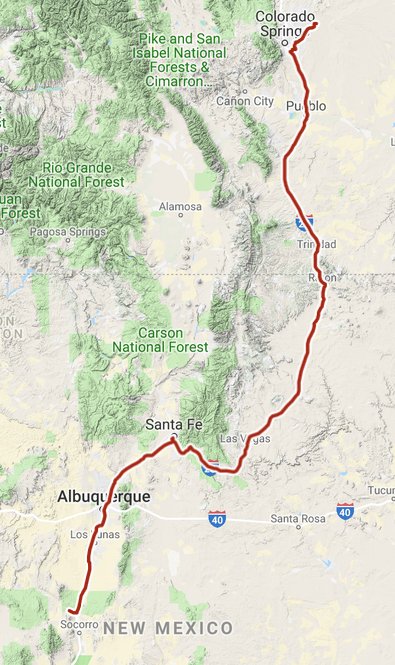
The majority of Day 1 was uneventful Interstate traveling. Once you exit off of I-25 heading South, things get a little more interesting. You have to travel the service road for a ways and it crosses under I-25 twice via those really narrow passage ways.

You quickly leave what little civilization there is behind and find yourself in a wide valley surrounded by low scrub and cacti.
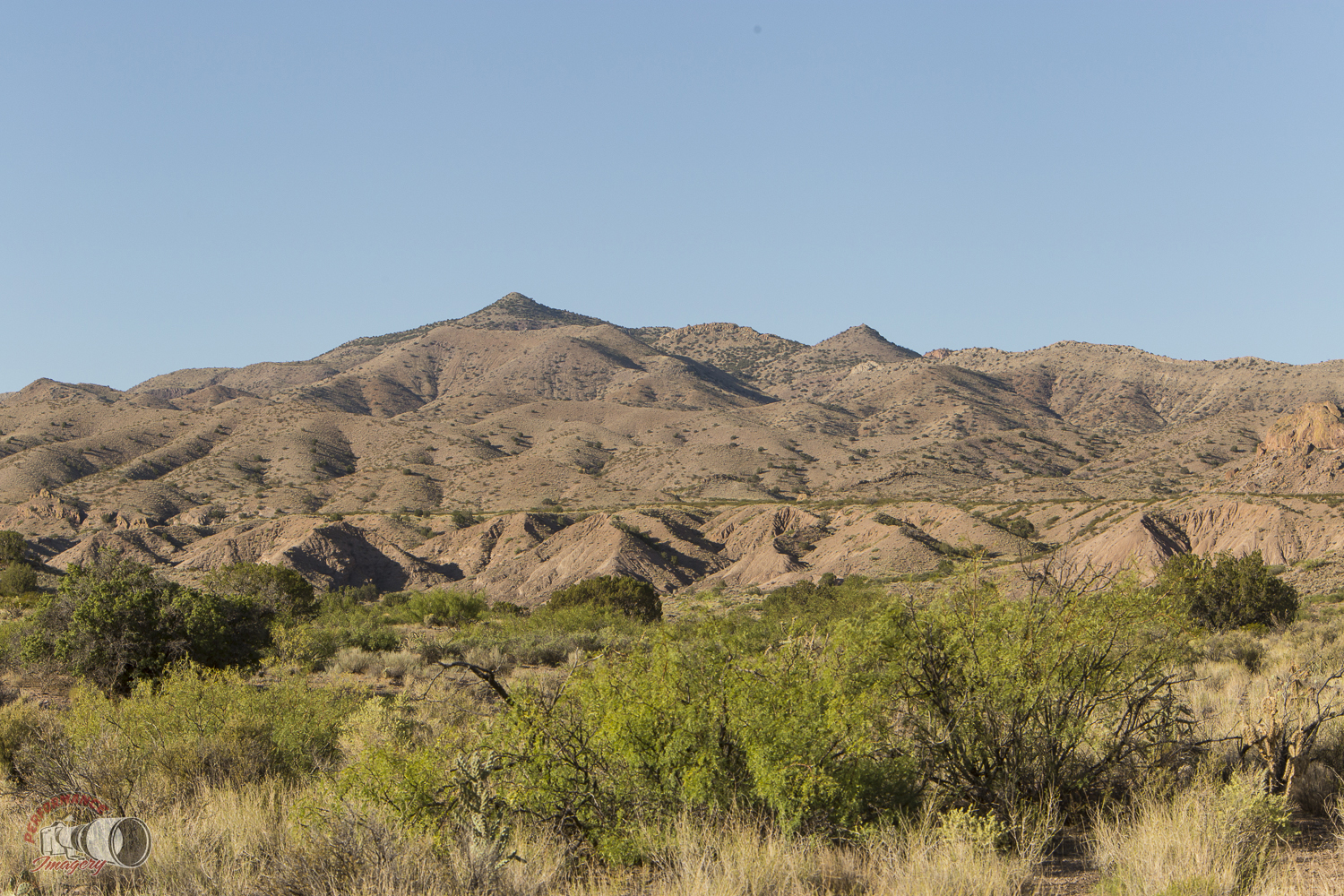
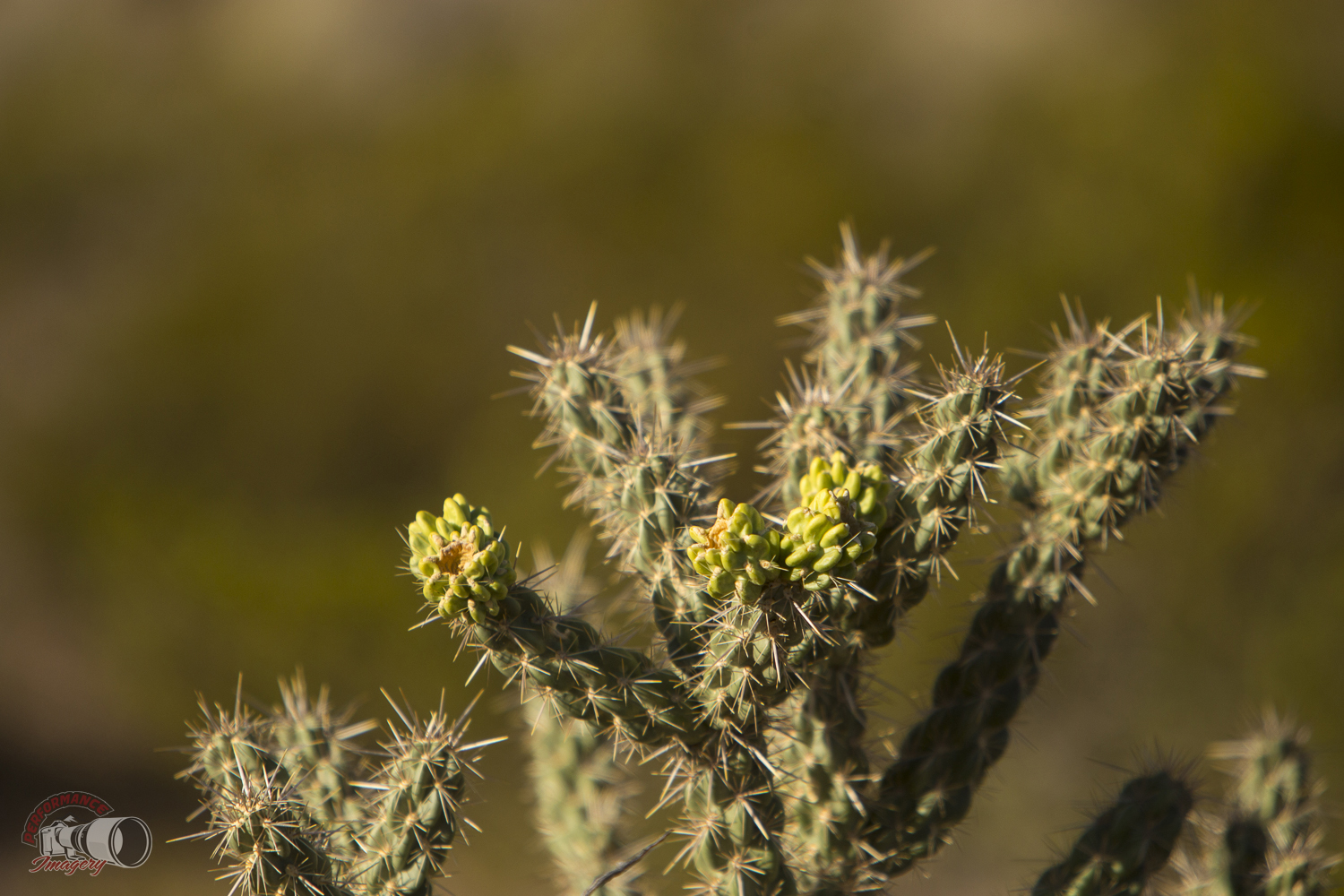
The San Lorenzo Canyon is a really cool area with several small side canyons with campsites at the end of them. One of them is particularly narrow and goes quite a bit deeper into the canyon before it ends at a very unique campsite. I was not expecting much camping activity since it was the middle of the week, but I also wanted to make sure I got this campsite. As such, I decided to setup camp as soon as I got there and explore the rest of the area on foot and the next day with the Jeep.

I was hoping to get some photos of the Milky Way and star trails from the campsite inside the narrow canyon, but there was a thin layer of clouds that foiled those plans. Around 0100 in the morning the sky cleared up some, but by then the Galactic Core had set and the photos came out just so-so. I did manage to get some night time campsite photos illuminated by the campfire and the off-road lights from the Jeep.
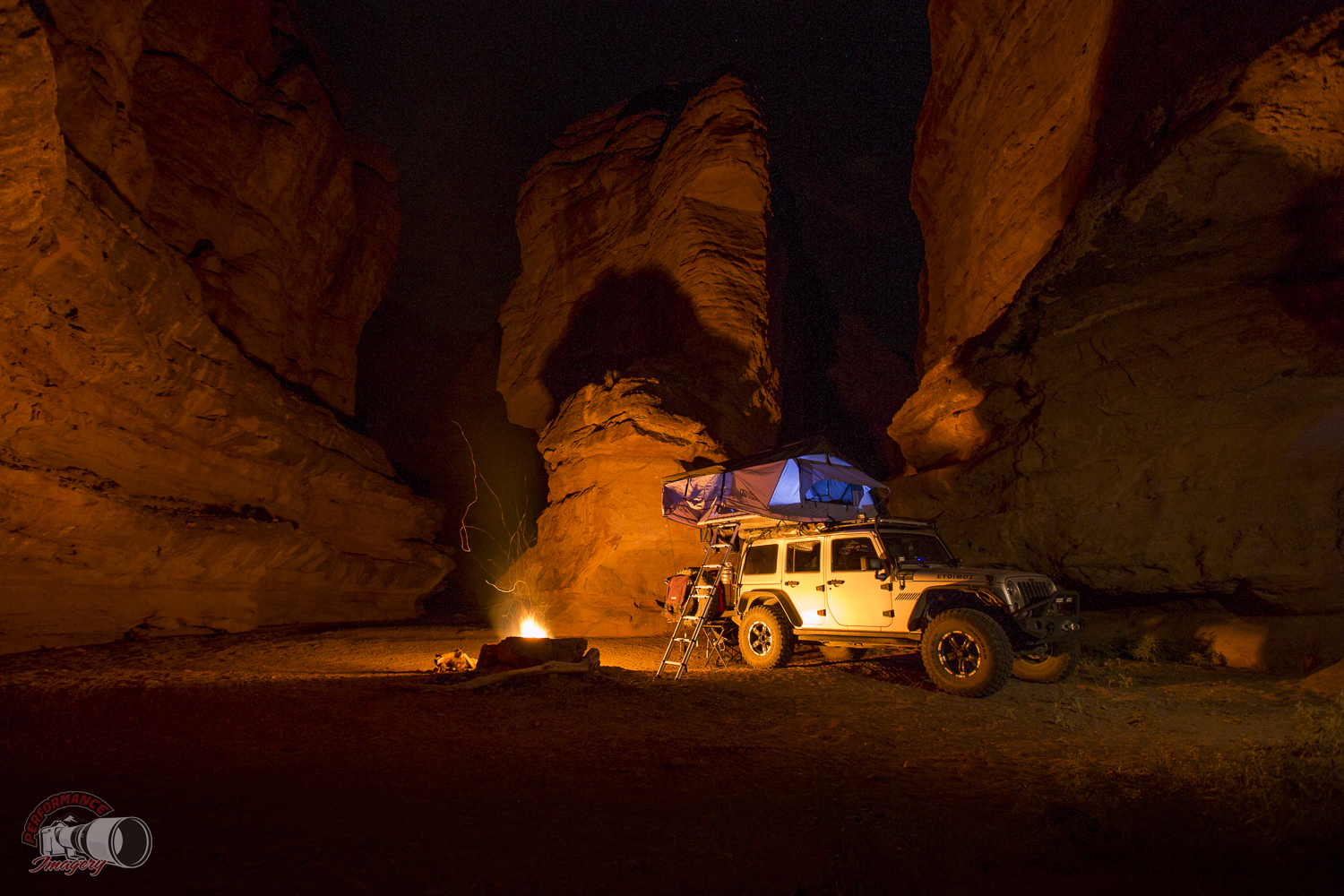
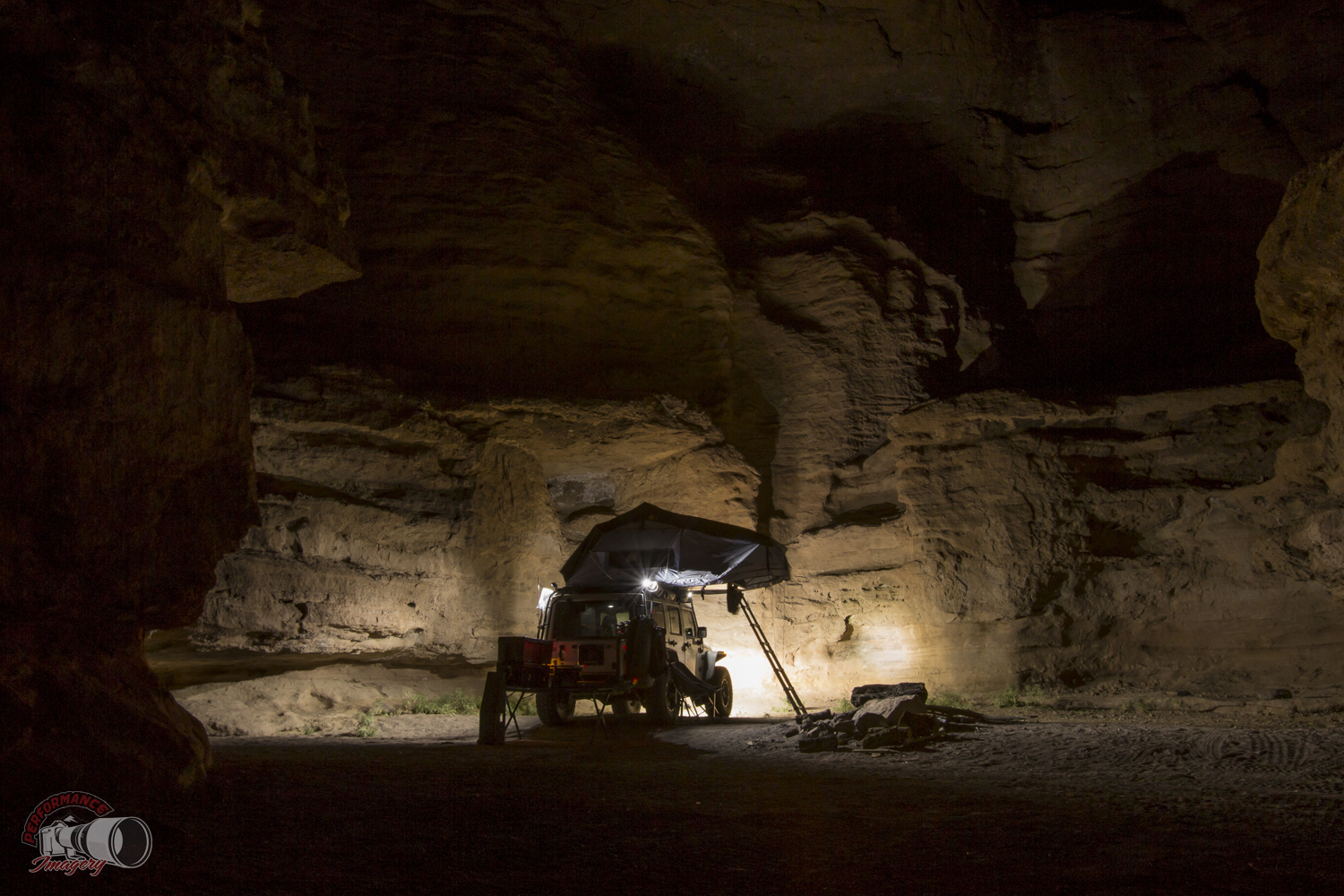
When my so saw that last photo, he asked me if I camped inside a huge cave! lol
Day 2 : San Lorenzo Canyon to the VLA and surrounding area
Miles: 162.8 mi
Trip Time: 14 hrs 8 min
Average Speed: 11.5 mph
Ascent: 5,198 ft
Decent: 2,899 ft
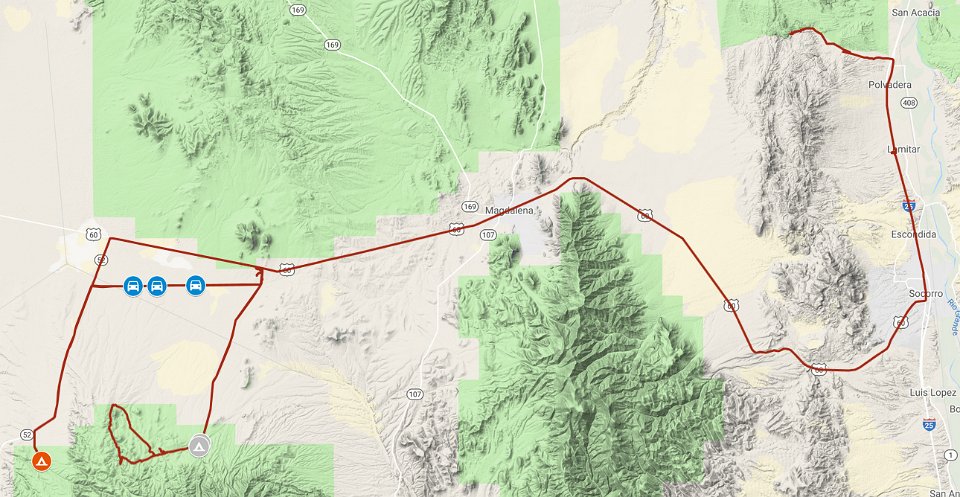
The next morning I was up at dawn to explore the rest of the San Lorenzo Canyon area before heading off to the VLA.


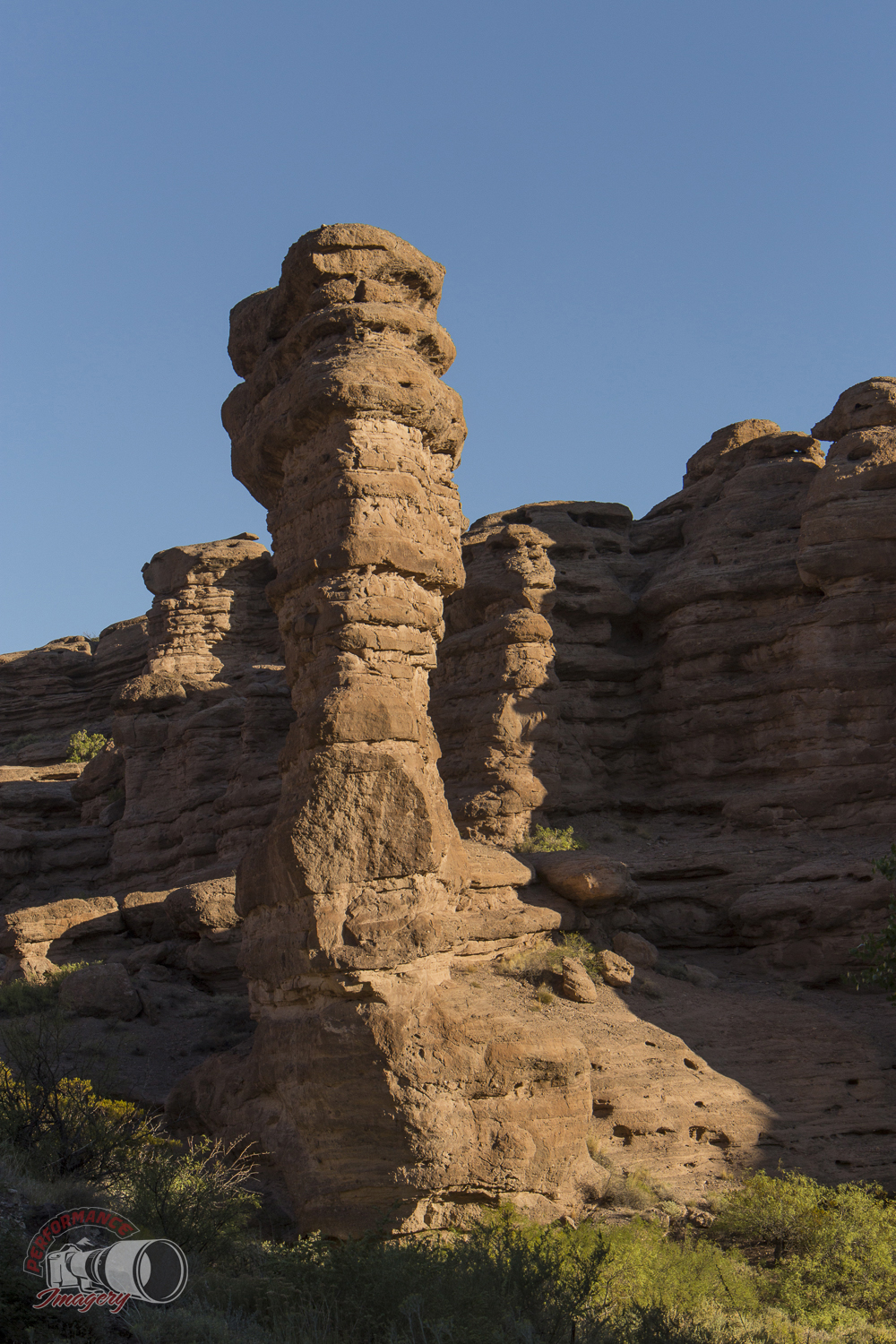
The main image I wanted to try and capture on this trip was the Milky Way with one of the VLA dishes in the foreground. Since the window for that photograph did not open until after 8:30 that night, I spent the day exploring the area and confirming some of my pre-scouted campsite. It was a great day to just be out by myself in nature exploring.
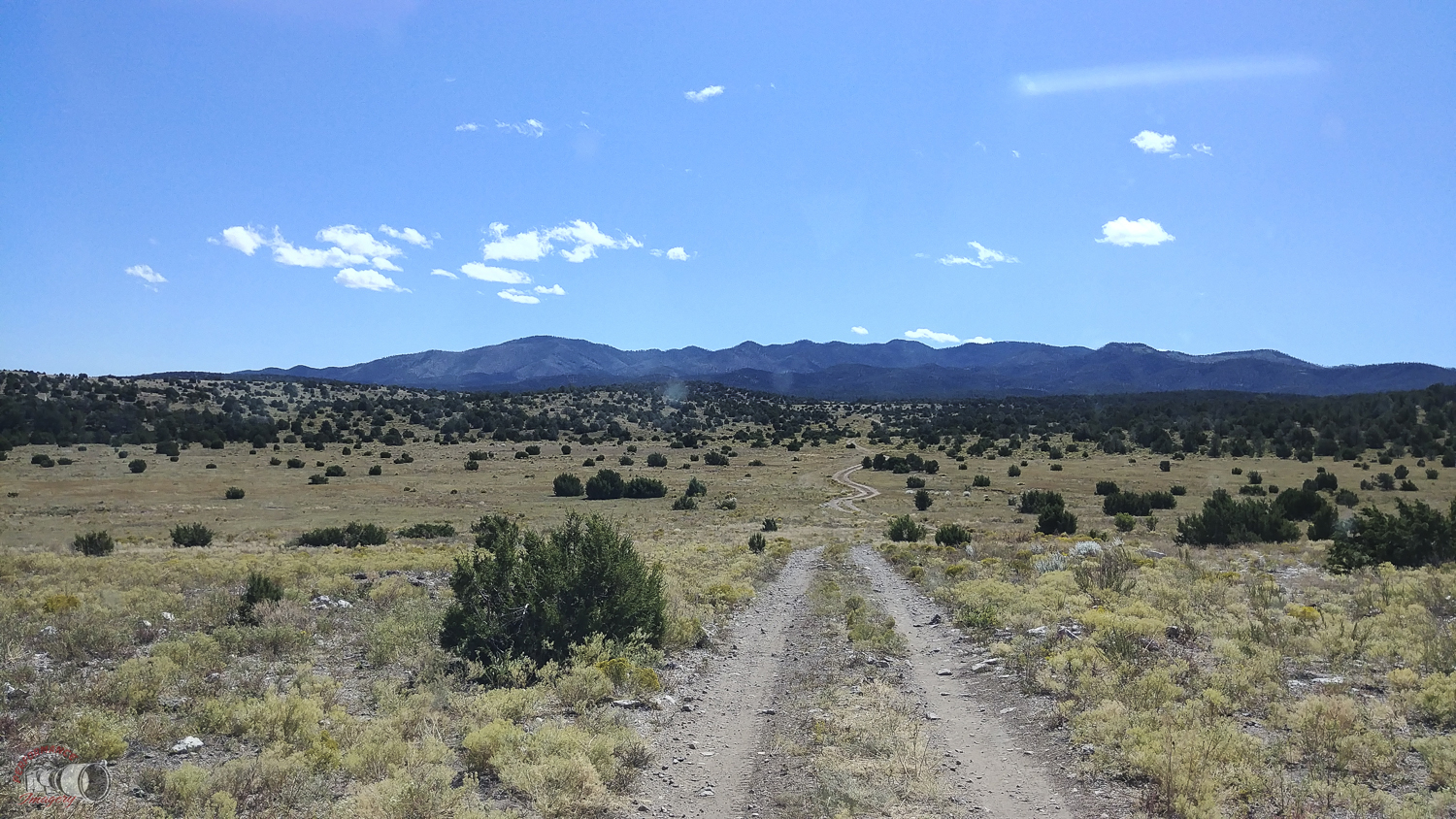
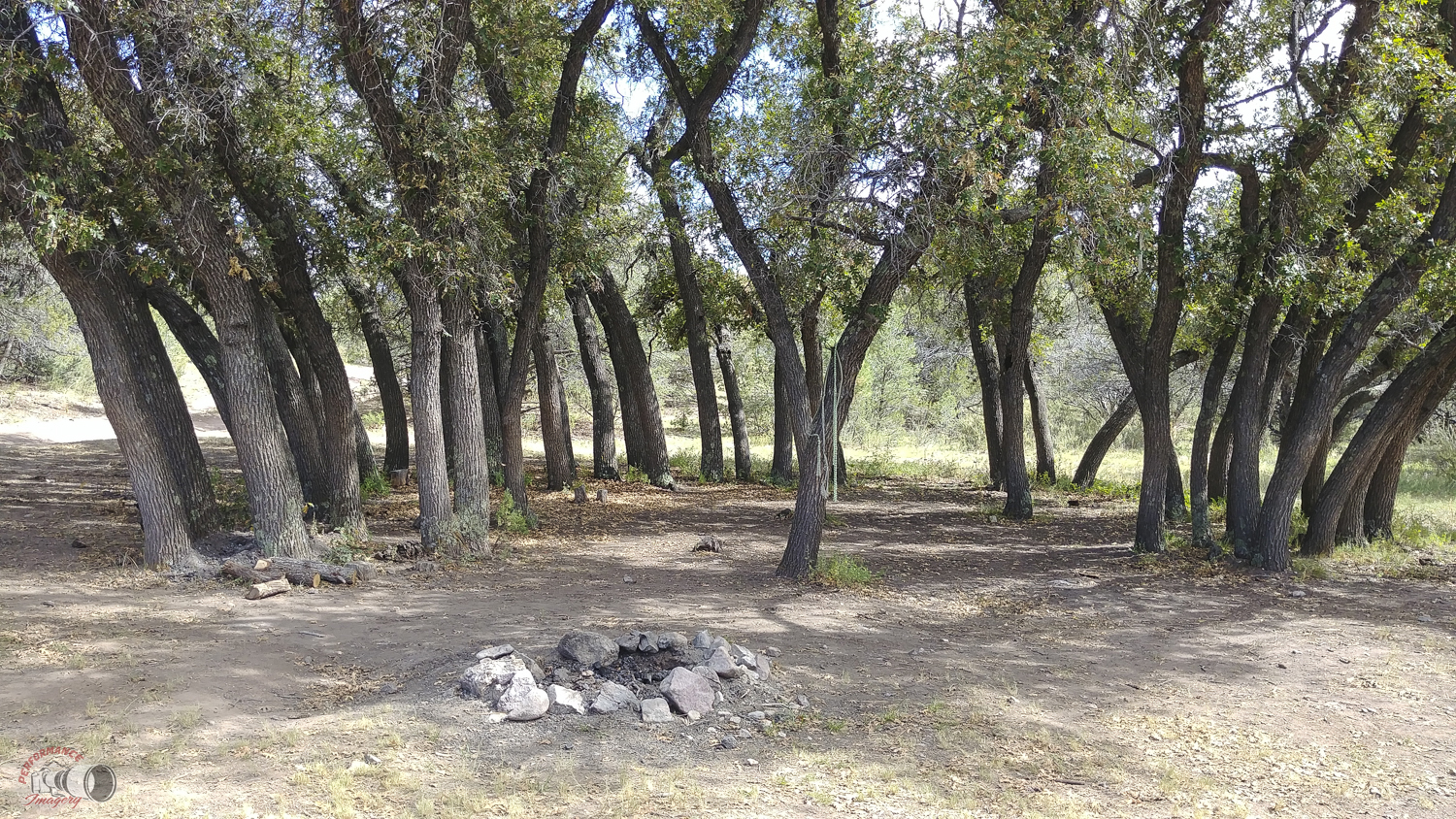

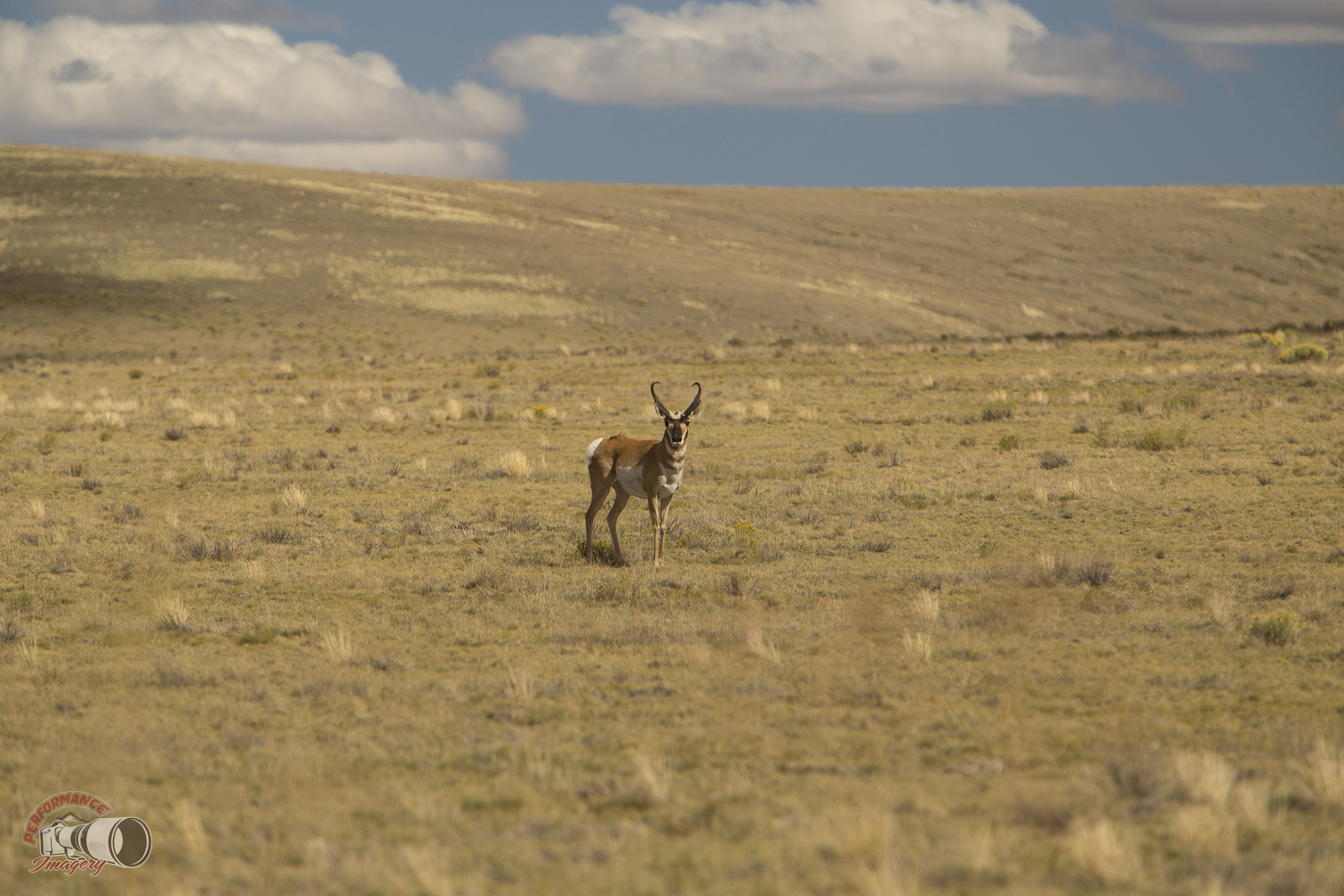
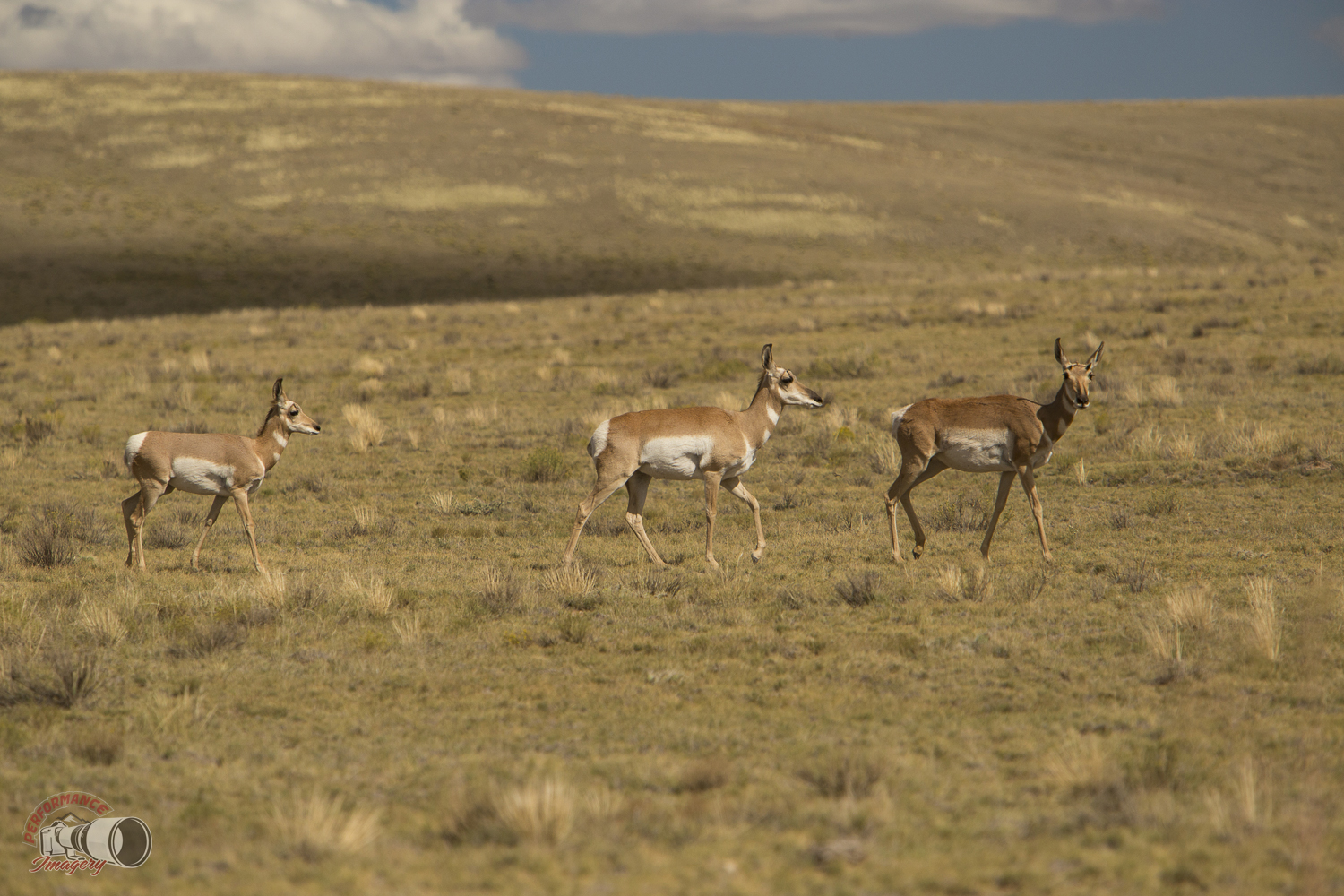
I did get some decent day time photos of the array as well.
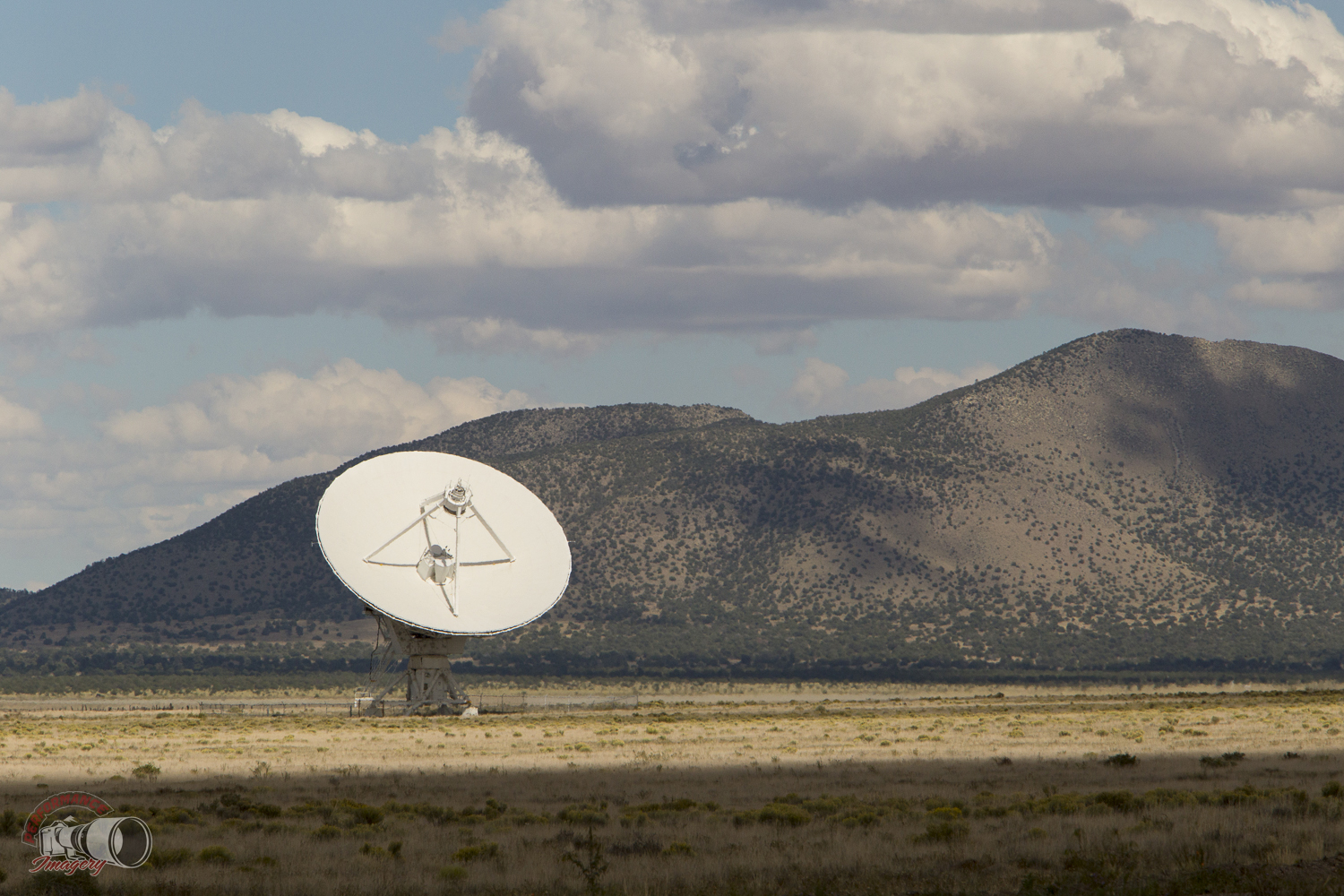
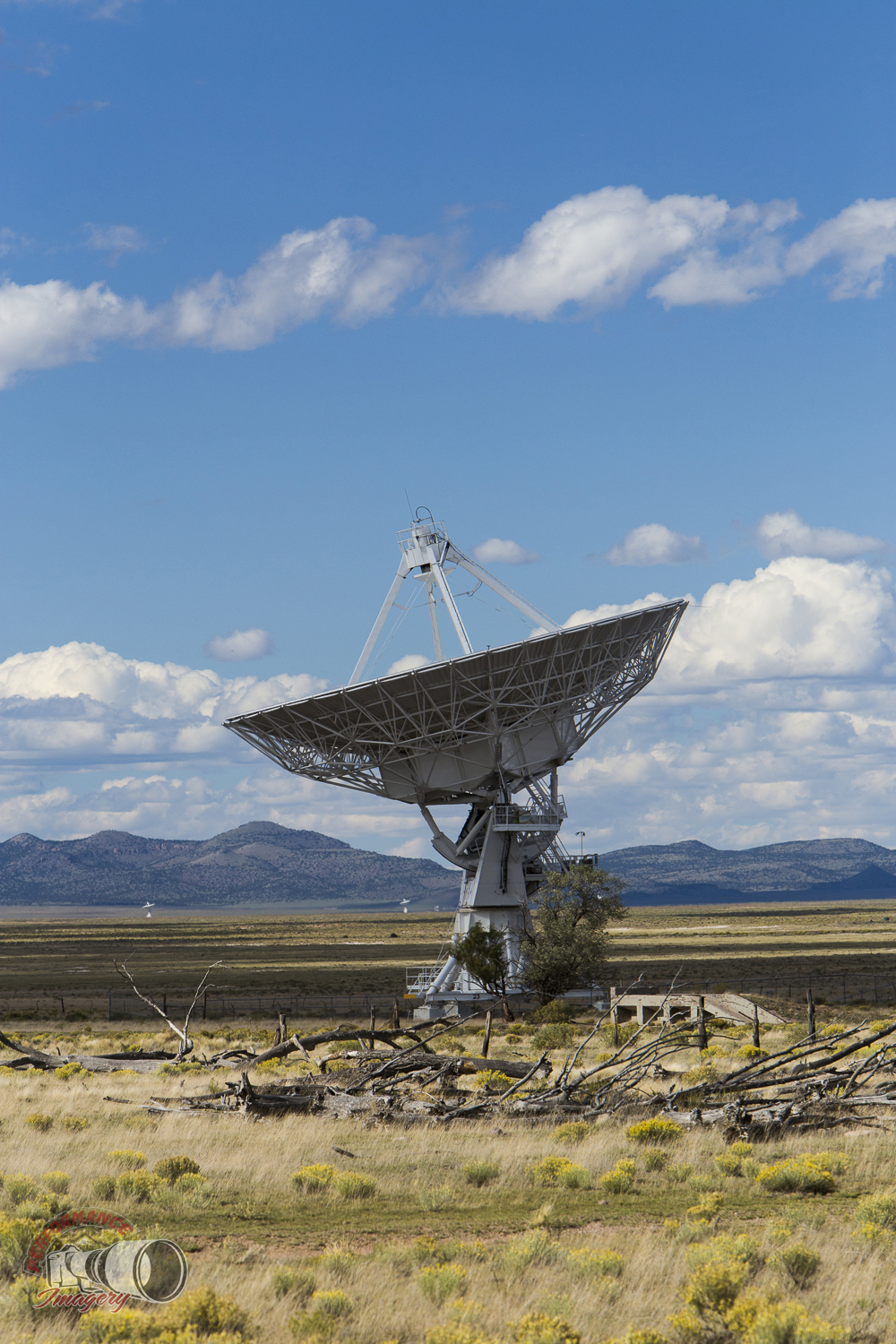
Once darkness fell I was able to go back to a location that I had identified earlier in the day and capture the image that I wanted from this trip.
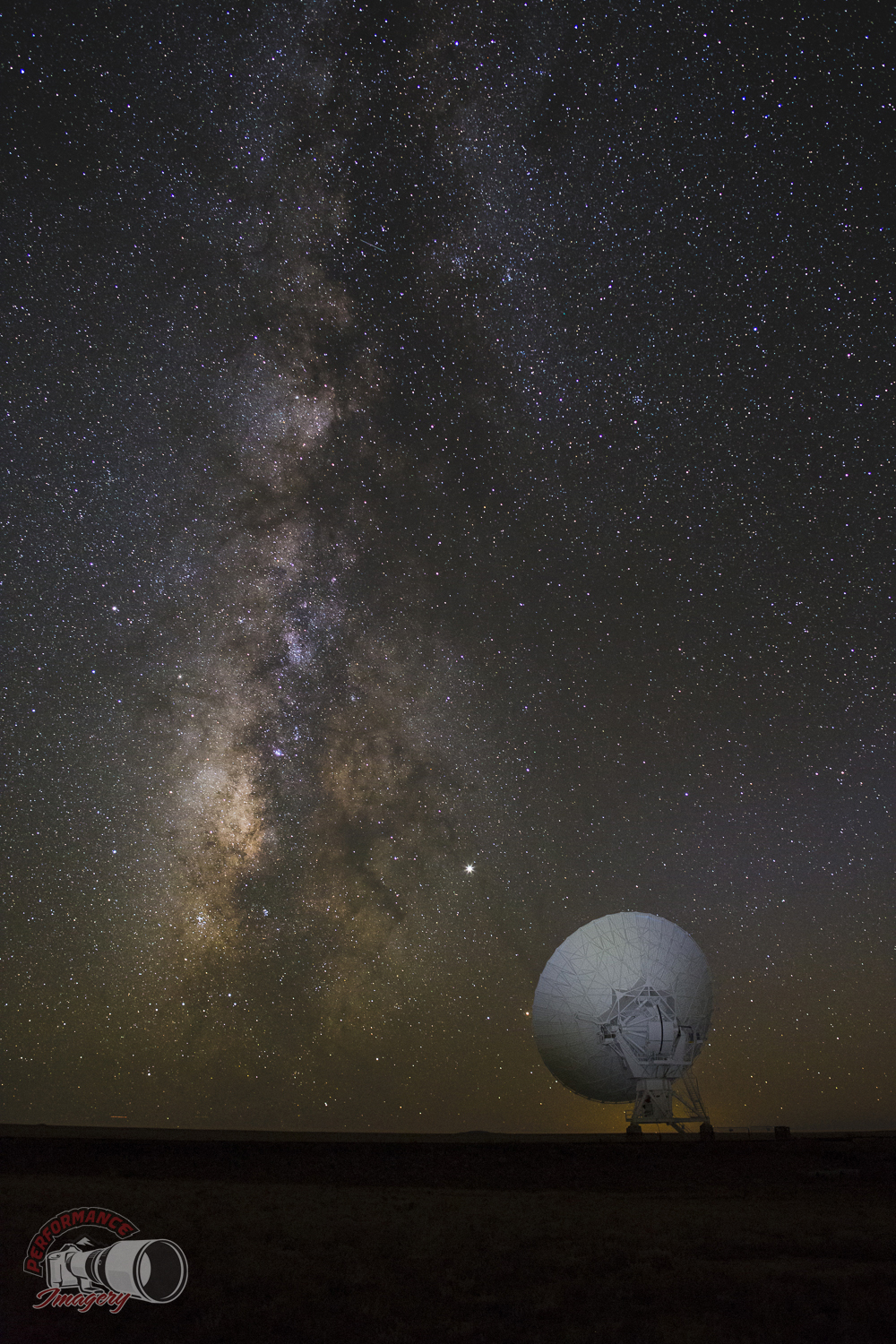
Setting up camp with a RTT when you are doing astrophotography is pretty interesting since everything has to be done really late at night on the darkest of nights (and locations).
Day 3 : VLA Visitor Center and surrounding area
Miles: 57.9 mi
Trip Time: 8 hrs 41 min
Average Speed: 7.8 mph
Ascent: 608 ft
Decent: 970 ft
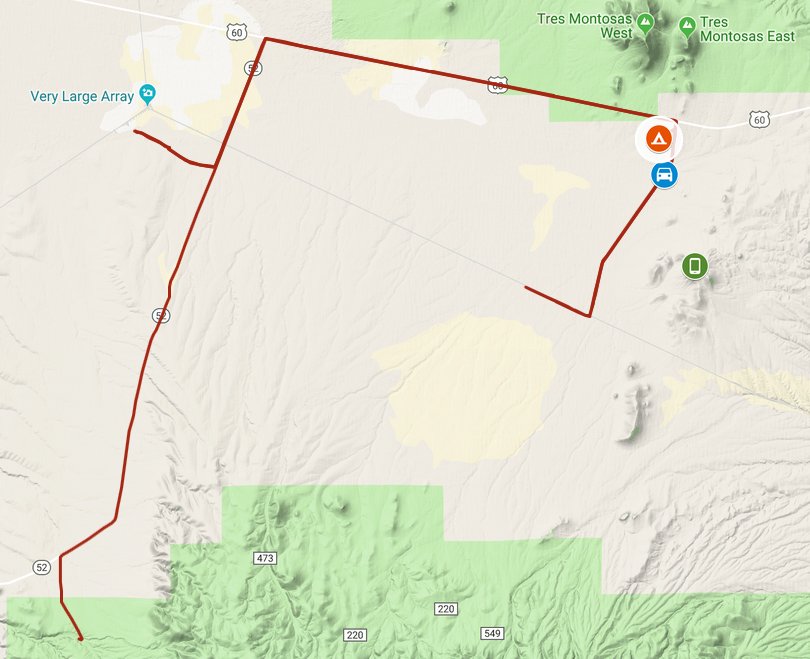
I was up again before sunrise to get back to the VLA to shoot in the morning light.

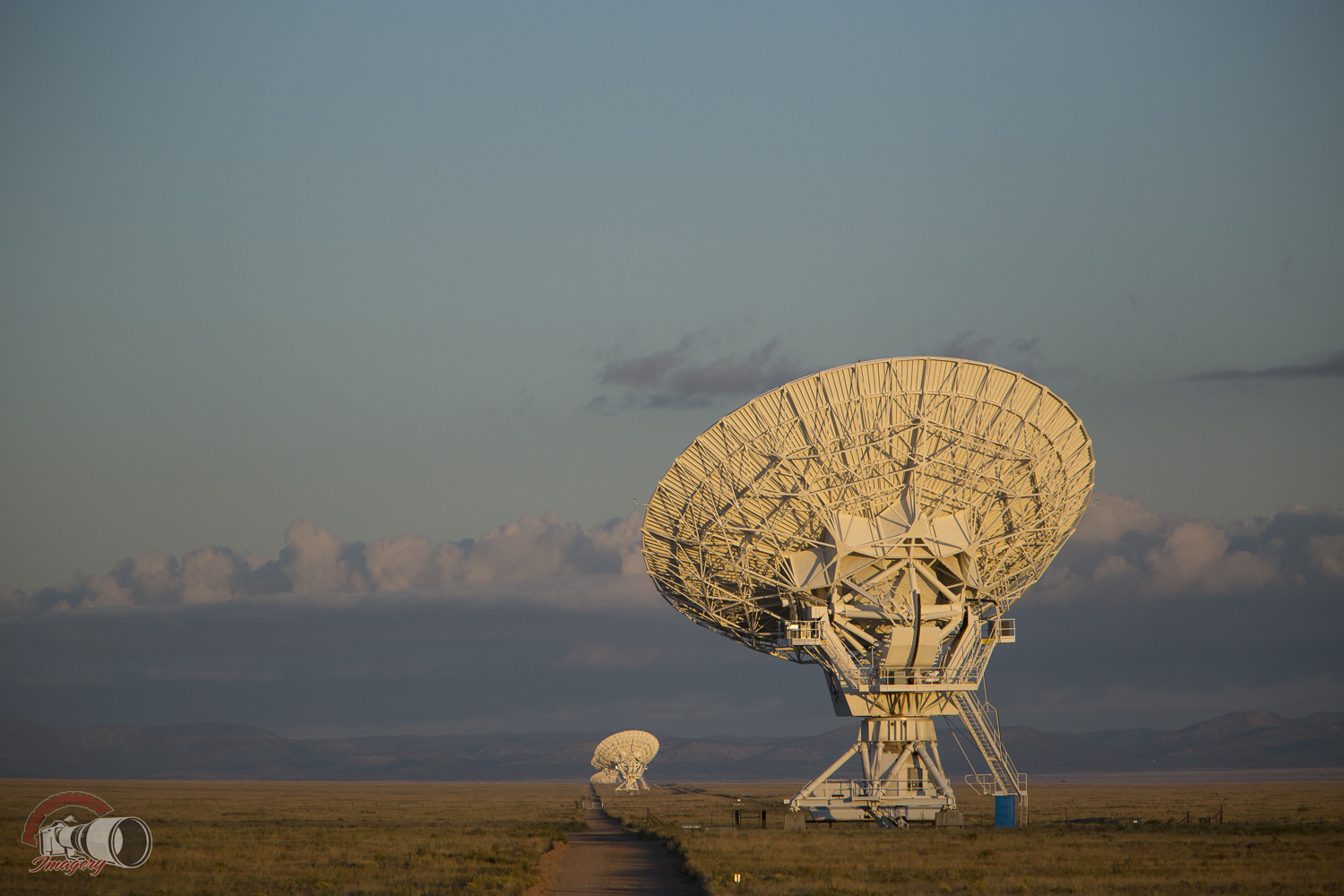
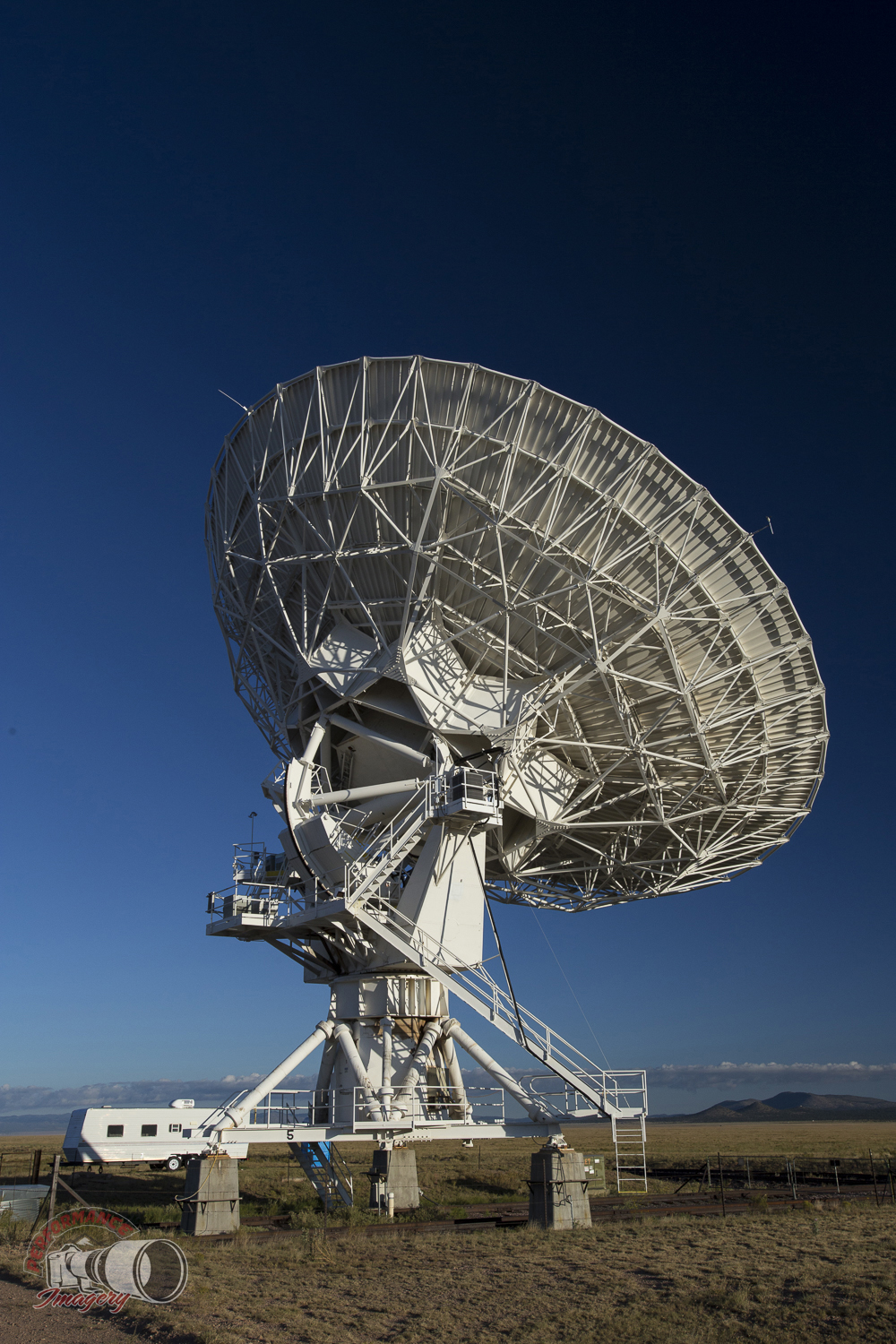
It is hard to imagine how large the arrays are until you can put it into perspective.

Once the VLA visitor center opened up, I made my way there for the official self guided tour and to watch the interesting videos they have.

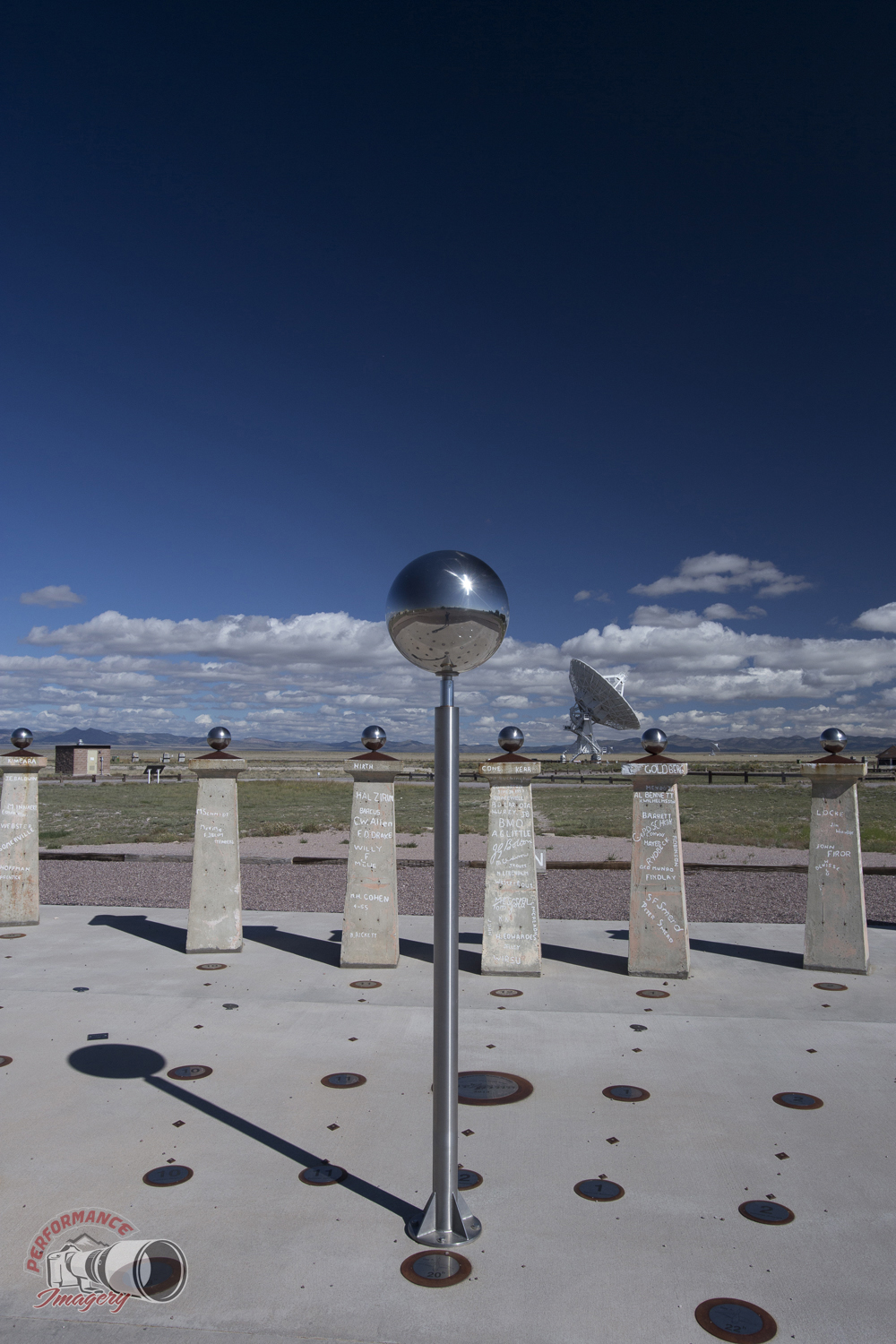
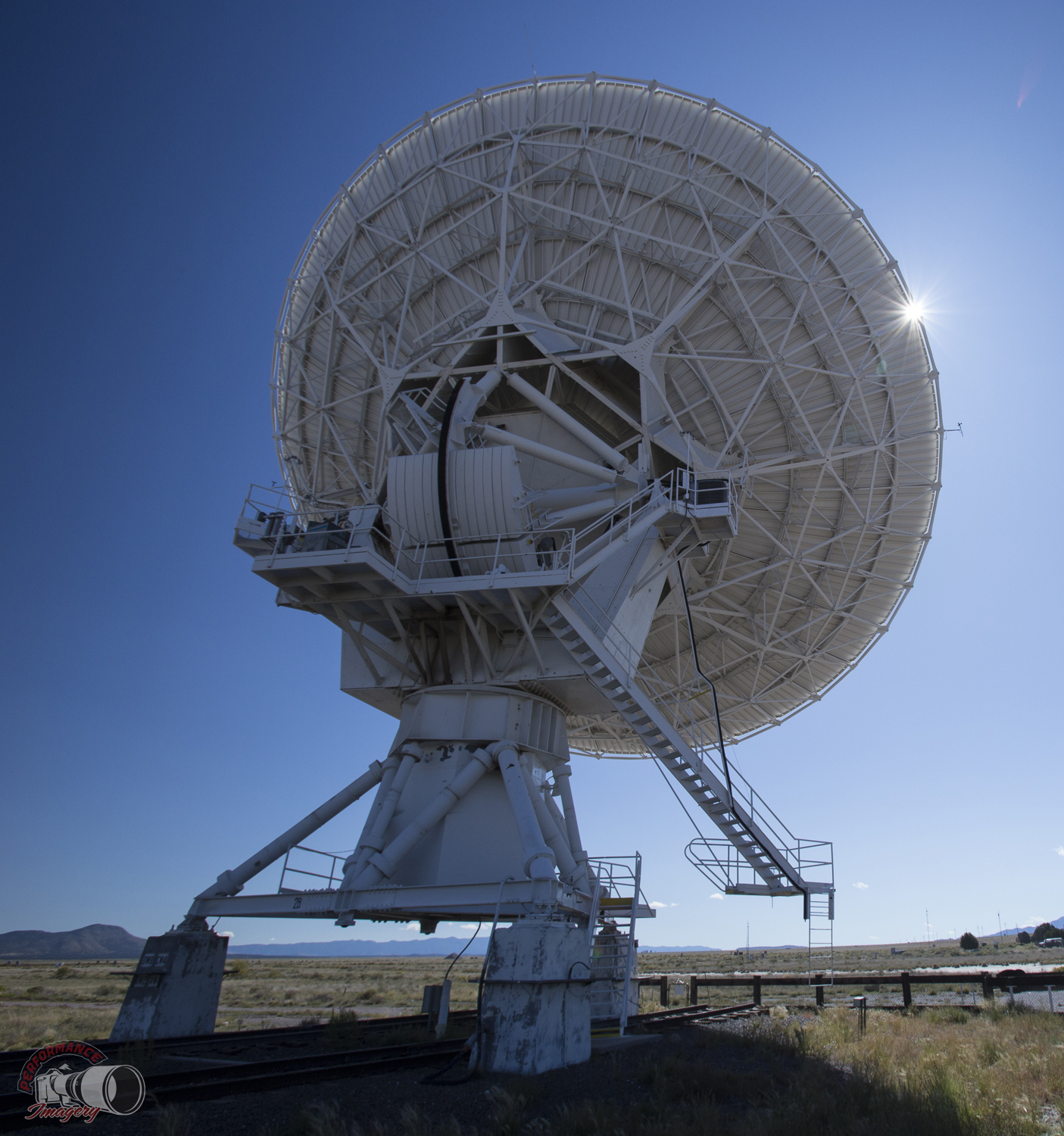
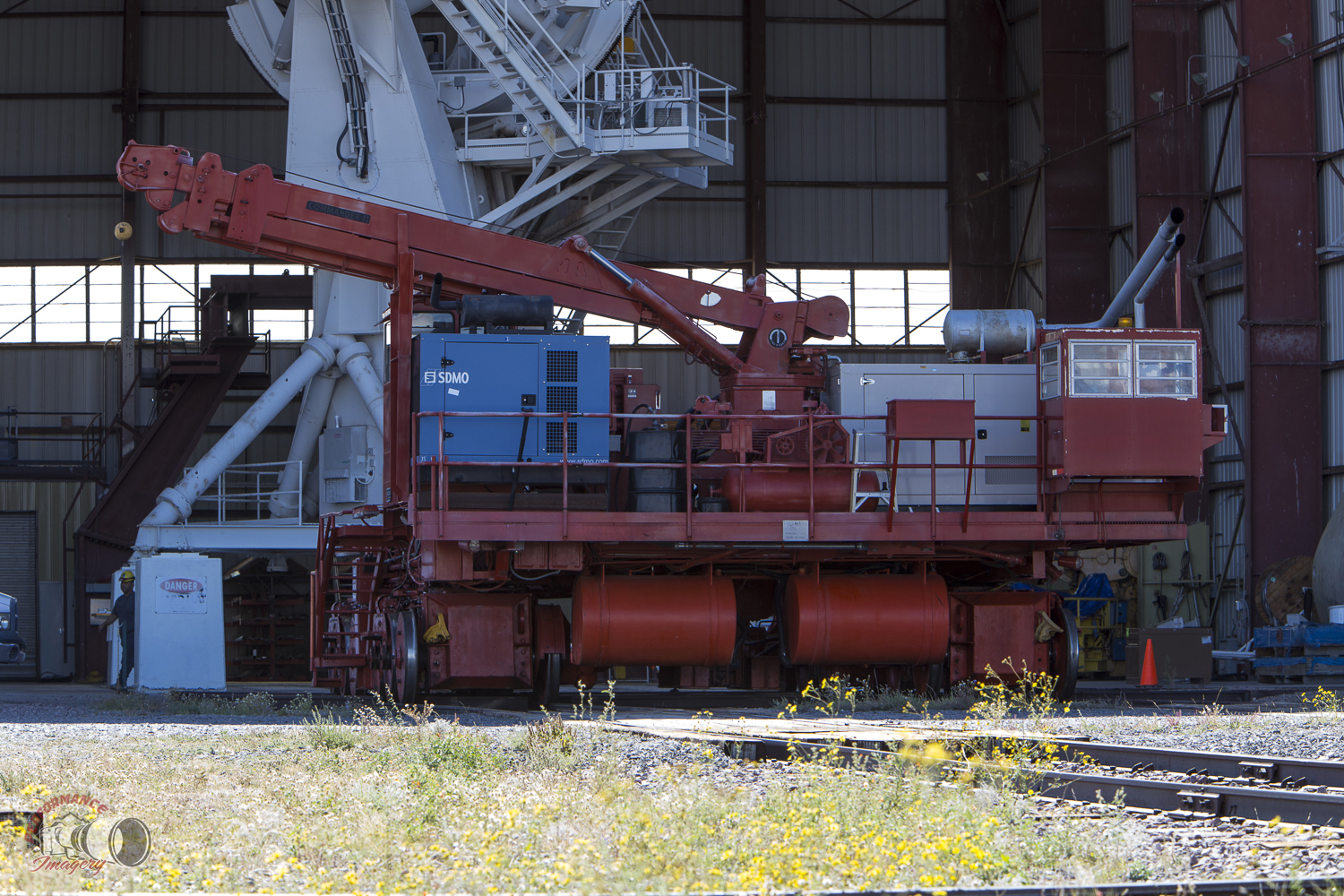
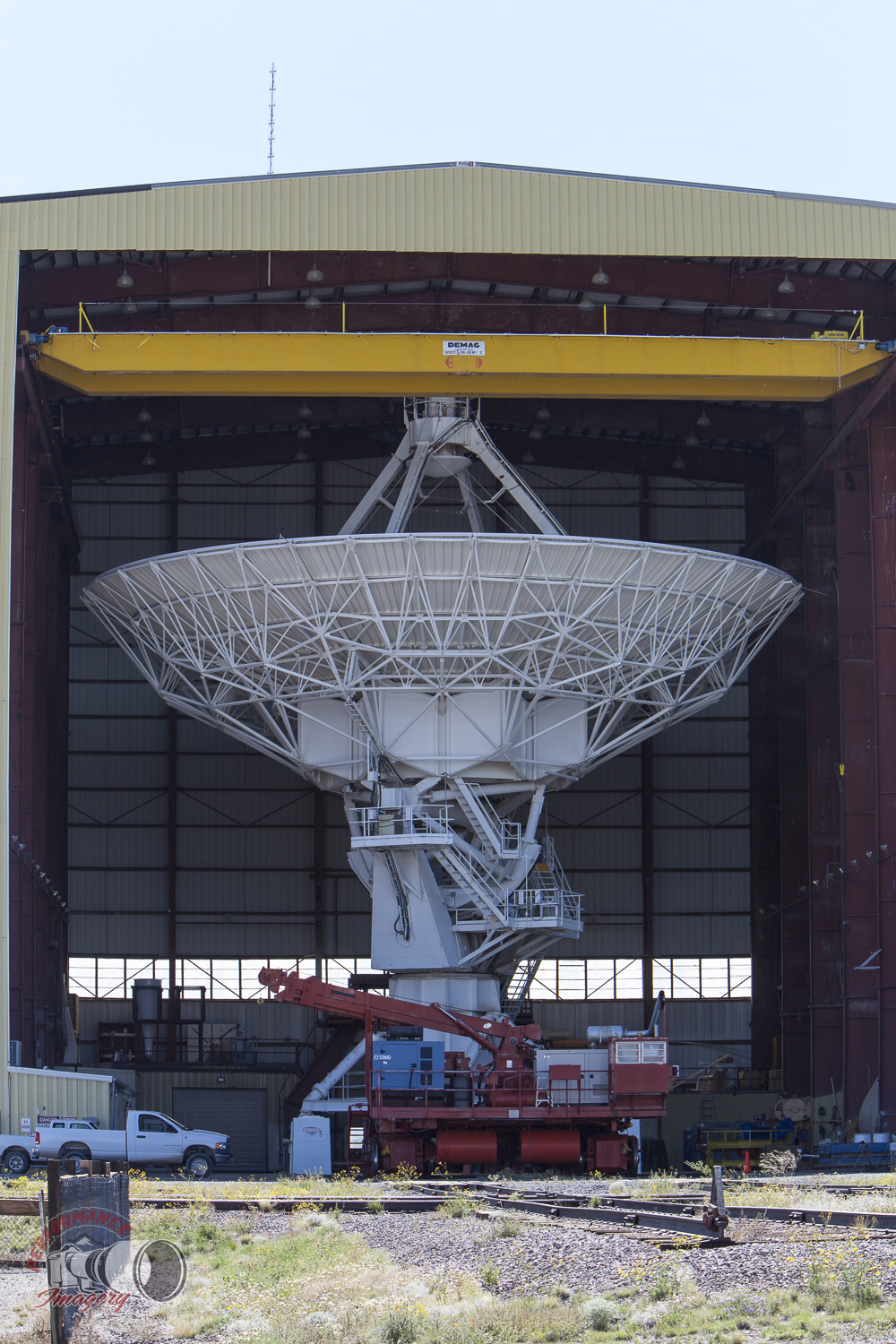
After the tour and some campsite lunch (there is no food at the VLA besides candy bars), I did some camera maintenance and took a nap in preparation for more night time photography. Waking up in the early evening, I drove closer to where I was going to shoot that night to see how the sky was developing. There were lots of clouds and some rain moving around the area. Those conditions can make for some nice evening and sunset images, but they can completely ruin any chances of Milky Way and stair trail photos.
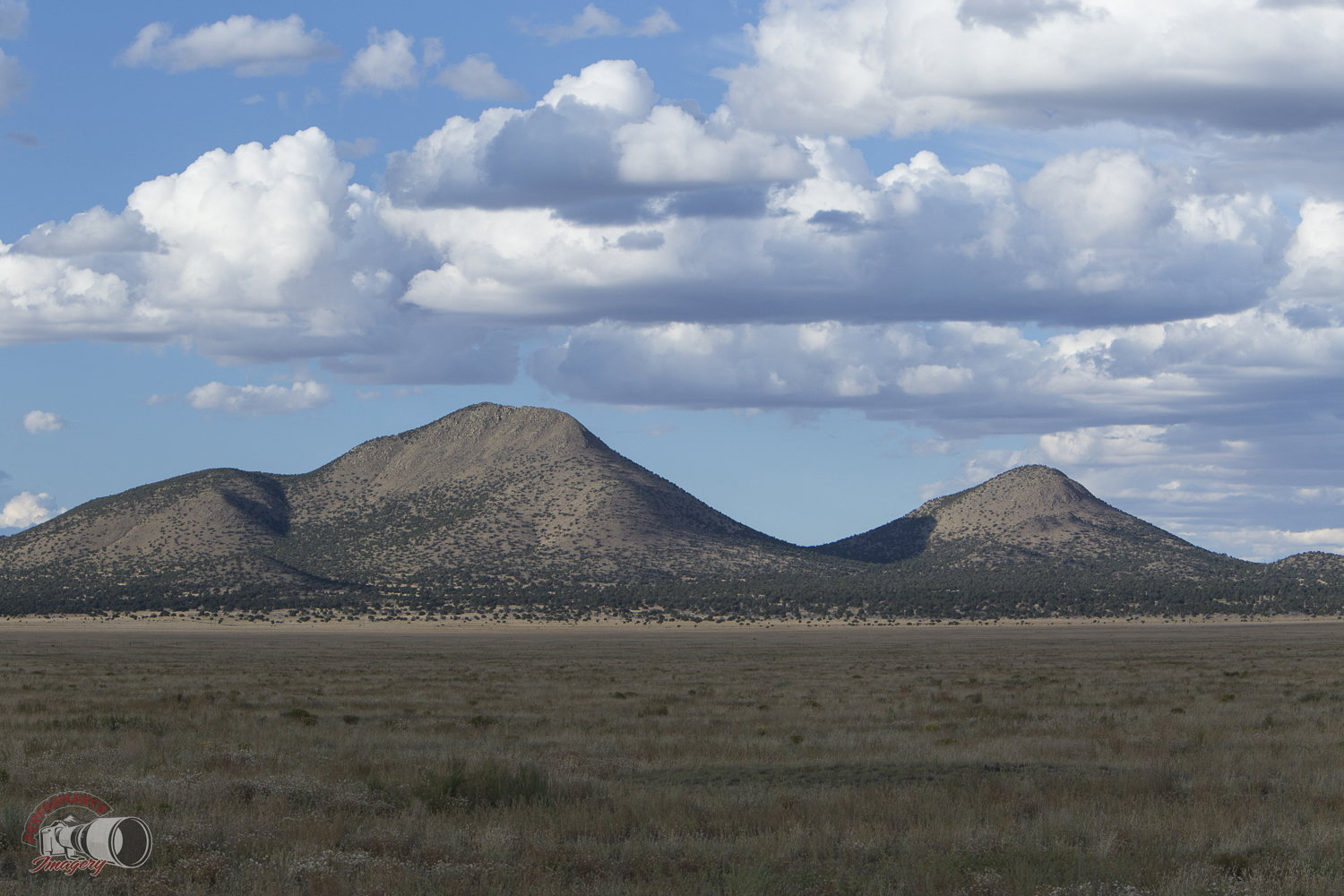


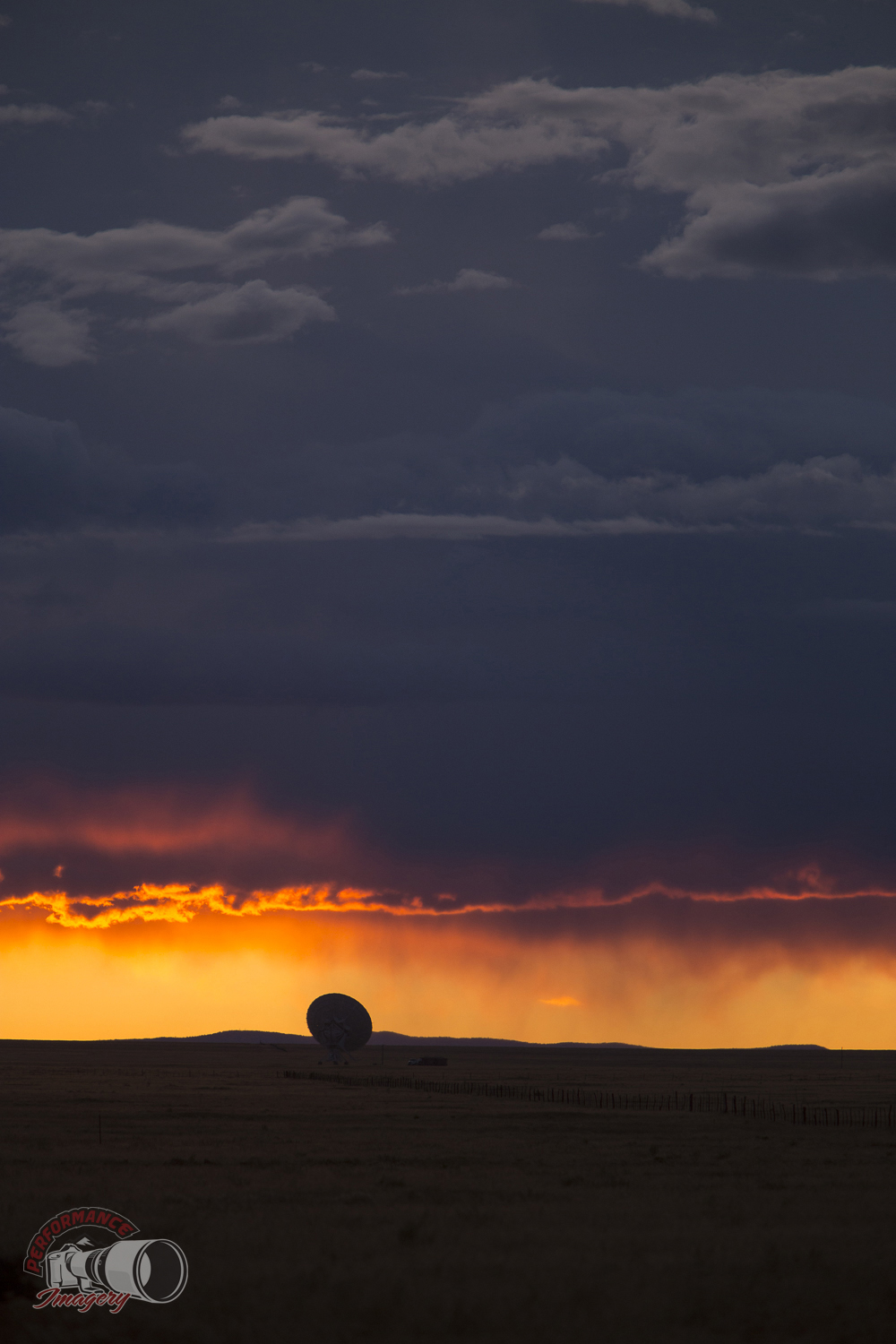
Luckily, by 9:00pm the skies had cleared and I was able to get some more night shots in.
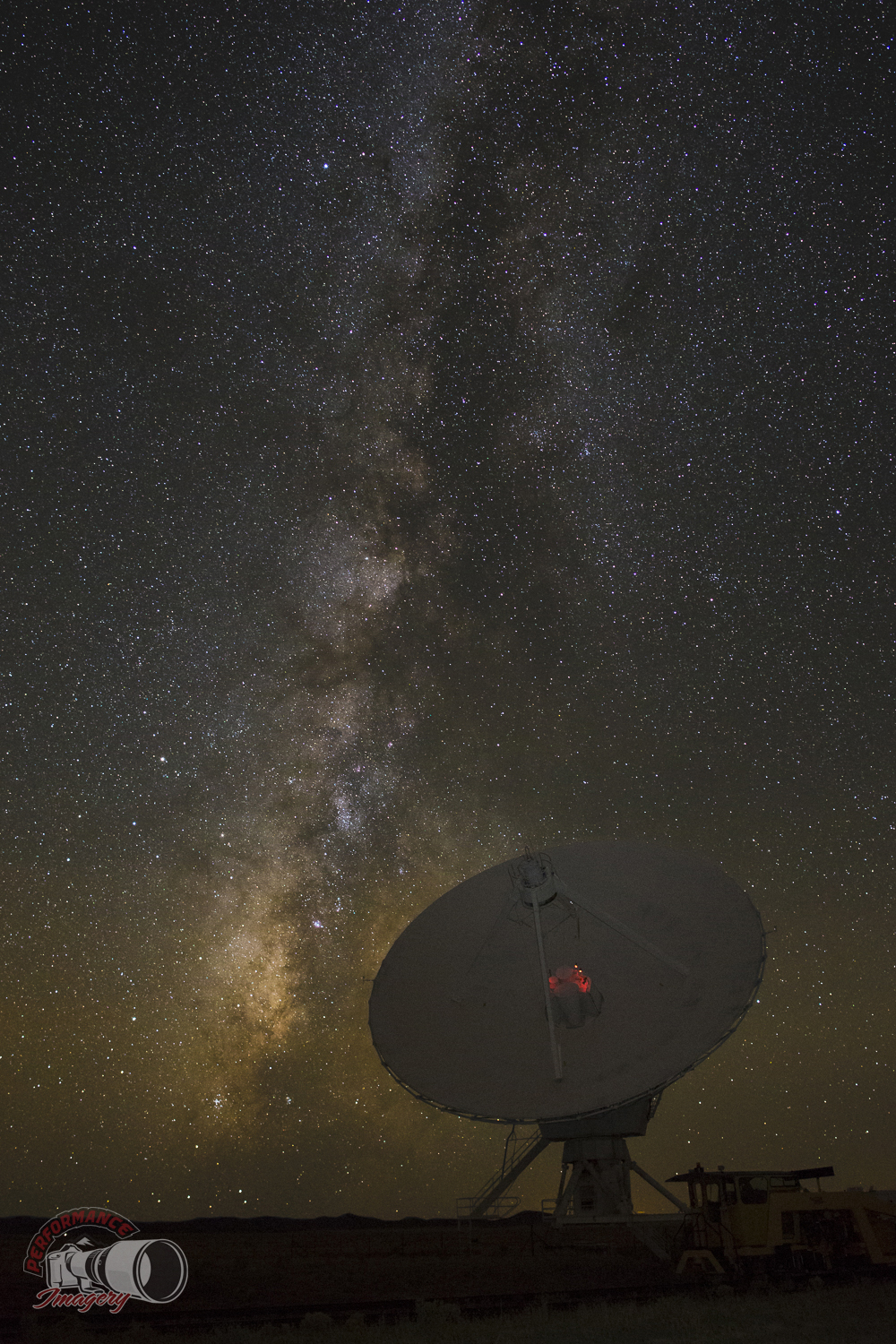
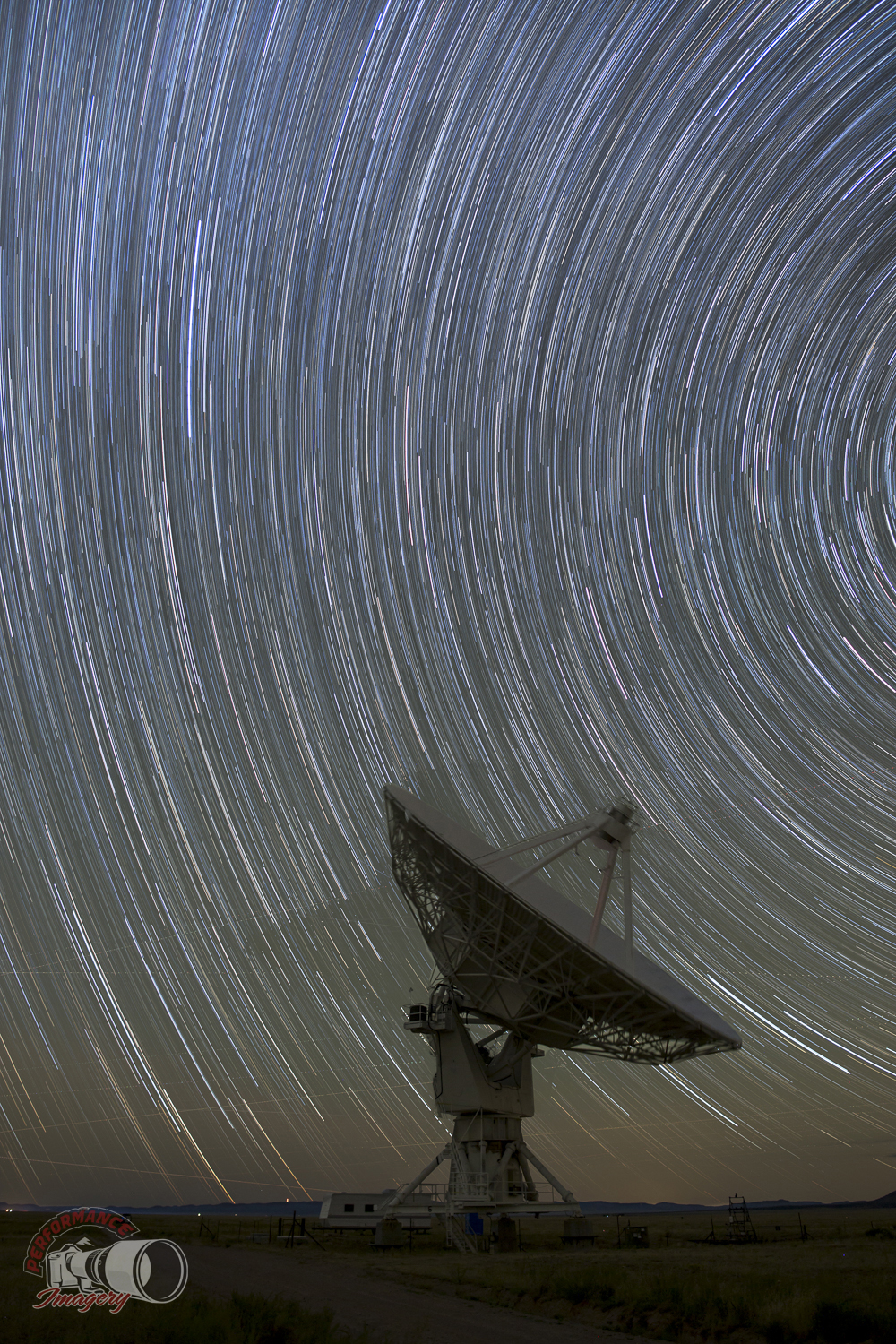
My wife appreciates it when I take at least one selfie on my trips.

After finishing up at the array that night, I made a quick camp nearby and setup one last photo to take while I was sleeping.
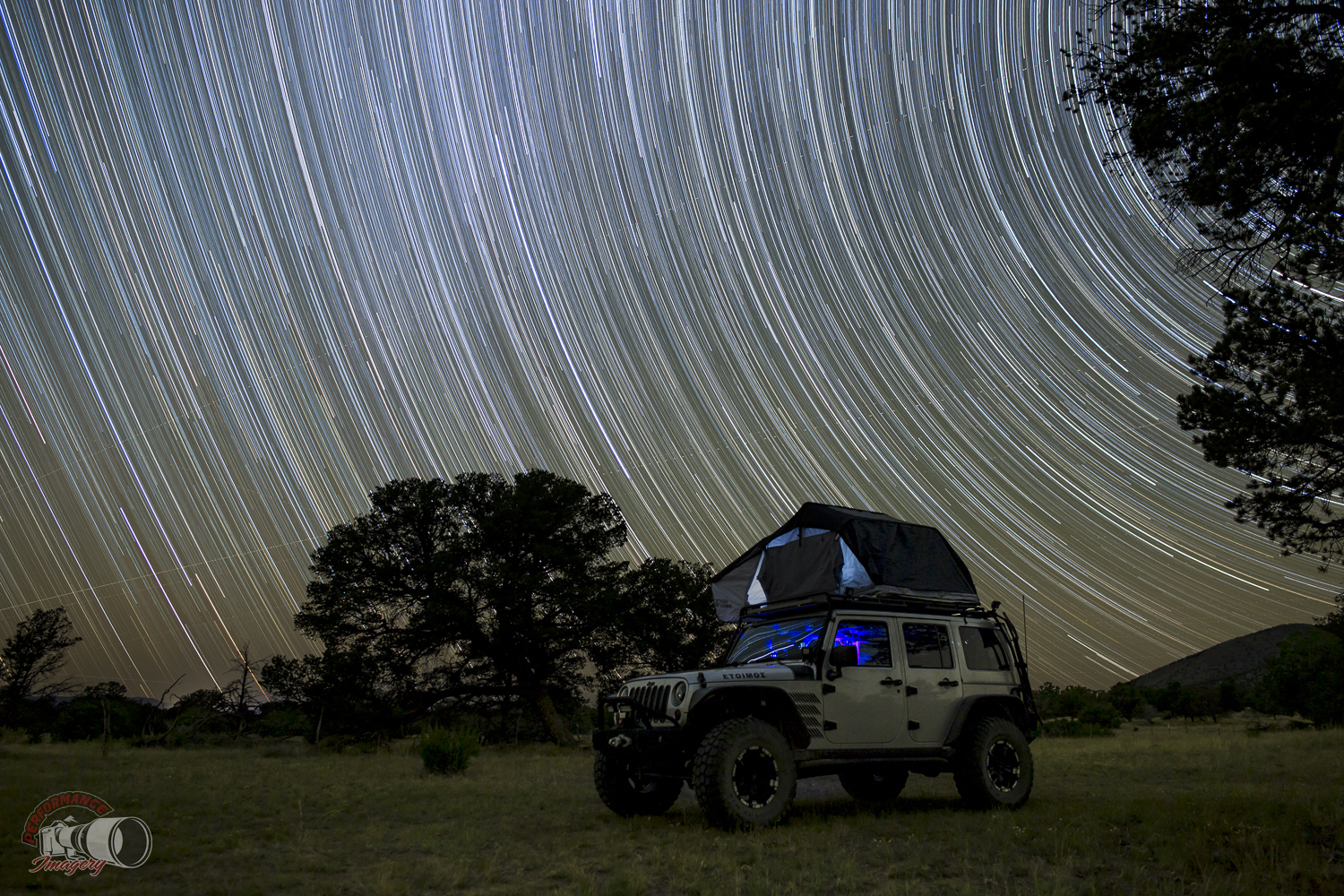
Day 4 : VLA surrounding area and home
Miles: 512.2 mi
Trip Time: 8 hrs 16 min
Average Speed: 62 mph
Ascent: 9545 ft
Decent: 9772 ft
The 4th day was a straight shot home via the highway and Interstate. This short trip turned out to be quite fun and while not physically relaxing due to all the driving and weird hours I kept, getting out in nature and shooting some photographs always relaxes me mentally.
“The Very Large Array, one of the world's premier astronomical radio observatories, consists of 27 radio antennas in a Y-shaped configuration on the Plains of San Agustin fifty miles west of Socorro, New Mexico. Each antenna is 25 meters (82 feet) in diameter. The data from the antennas is combined electronically to give the resolution of an antenna 36 km (22 miles) across, with the equivalent sensitivity of a dish 130 meters (422 feet) in diameter.”
I was at the VLA in mid-September and it was in configuration A, the most spread out configuration. They post a schedule showing what configuration the Array will be in. This is very helpful if you are trying to get certain photographs. I am already thinking about a return trip while it is in configuration C or D to get some photos of the dishes all clustered together.
Day 1: Peyton, CO to San Lorenzo Canyon, NM
Miles: 471.6 mi
Trip Time: 8 hrs 42 min
Average Speed: 54.1 mph
Ascent: 8,468 ft
Decent: 10,041 ft

The majority of Day 1 was uneventful Interstate traveling. Once you exit off of I-25 heading South, things get a little more interesting. You have to travel the service road for a ways and it crosses under I-25 twice via those really narrow passage ways.

You quickly leave what little civilization there is behind and find yourself in a wide valley surrounded by low scrub and cacti.


The San Lorenzo Canyon is a really cool area with several small side canyons with campsites at the end of them. One of them is particularly narrow and goes quite a bit deeper into the canyon before it ends at a very unique campsite. I was not expecting much camping activity since it was the middle of the week, but I also wanted to make sure I got this campsite. As such, I decided to setup camp as soon as I got there and explore the rest of the area on foot and the next day with the Jeep.

I was hoping to get some photos of the Milky Way and star trails from the campsite inside the narrow canyon, but there was a thin layer of clouds that foiled those plans. Around 0100 in the morning the sky cleared up some, but by then the Galactic Core had set and the photos came out just so-so. I did manage to get some night time campsite photos illuminated by the campfire and the off-road lights from the Jeep.


When my so saw that last photo, he asked me if I camped inside a huge cave! lol
Day 2 : San Lorenzo Canyon to the VLA and surrounding area
Miles: 162.8 mi
Trip Time: 14 hrs 8 min
Average Speed: 11.5 mph
Ascent: 5,198 ft
Decent: 2,899 ft

The next morning I was up at dawn to explore the rest of the San Lorenzo Canyon area before heading off to the VLA.



The main image I wanted to try and capture on this trip was the Milky Way with one of the VLA dishes in the foreground. Since the window for that photograph did not open until after 8:30 that night, I spent the day exploring the area and confirming some of my pre-scouted campsite. It was a great day to just be out by myself in nature exploring.





I did get some decent day time photos of the array as well.


Once darkness fell I was able to go back to a location that I had identified earlier in the day and capture the image that I wanted from this trip.

Setting up camp with a RTT when you are doing astrophotography is pretty interesting since everything has to be done really late at night on the darkest of nights (and locations).
Day 3 : VLA Visitor Center and surrounding area
Miles: 57.9 mi
Trip Time: 8 hrs 41 min
Average Speed: 7.8 mph
Ascent: 608 ft
Decent: 970 ft

I was up again before sunrise to get back to the VLA to shoot in the morning light.



It is hard to imagine how large the arrays are until you can put it into perspective.

Once the VLA visitor center opened up, I made my way there for the official self guided tour and to watch the interesting videos they have.





After the tour and some campsite lunch (there is no food at the VLA besides candy bars), I did some camera maintenance and took a nap in preparation for more night time photography. Waking up in the early evening, I drove closer to where I was going to shoot that night to see how the sky was developing. There were lots of clouds and some rain moving around the area. Those conditions can make for some nice evening and sunset images, but they can completely ruin any chances of Milky Way and stair trail photos.




Luckily, by 9:00pm the skies had cleared and I was able to get some more night shots in.


My wife appreciates it when I take at least one selfie on my trips.

After finishing up at the array that night, I made a quick camp nearby and setup one last photo to take while I was sleeping.

Day 4 : VLA surrounding area and home
Miles: 512.2 mi
Trip Time: 8 hrs 16 min
Average Speed: 62 mph
Ascent: 9545 ft
Decent: 9772 ft
The 4th day was a straight shot home via the highway and Interstate. This short trip turned out to be quite fun and while not physically relaxing due to all the driving and weird hours I kept, getting out in nature and shooting some photographs always relaxes me mentally.







